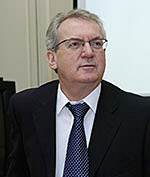 |
> Call for Proposals for the Pavilion and Exhibition Design of the Czech Republic at EXPO 2010
> I Don't Want to Build on Sand... an Interview with Pavel Stehlík
> Do World Expositions Still Make Sense? | Zdeněk Lukeš
> World Exposition Without Illusions, but With Awareness of Its Possibilities | Marek Pokorný












